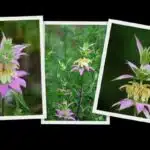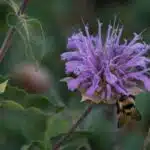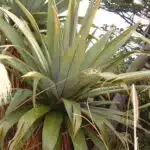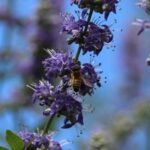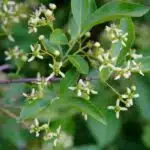The Balm of Gilead, also known as the Populus balsamifera, is a species of tree that belongs to the Salicaceae family. This species is native to North America and has been used for centuries in traditional medicine due to its healing properties. The tree produces a resinous substance that is commonly referred to as the ‘Balm of Gilead.’ This substance has been used for various purposes including treating wounds, easing respiratory problems, and relieving pain.
In recent times, there has been an increased interest in cultivating the Balm of Gilead due to its medicinal properties. However, growing this tree requires a certain level of expertise and knowledge. This guide aims to provide comprehensive details on how to care for and grow the Balm of Gilead successfully. From soil requirements to pruning techniques, this article will equip horticulturalists and botanists with all they need to know about this valuable plant. Whether you are looking to cultivate it for personal use or commercial purposes, this guide will serve as an excellent resource for anyone seeking information on the Balm of Gilead.
Overview Of The Balm Of Gilead
Balm of Gilead is a shrub that grows mostly in North America, and it belongs to the poplar family. The plant has a unique aroma, which comes from its sticky buds that have resinous properties. These buds are used to extract essential oils that have medicinal properties. The plant is also known as Populus Balsamifera or the balsam poplar.
Cultivation techniques for Balm of Gilead vary depending on the growing zone, but generally, it prefers moist soil and full sun or partial shade. The plant can be propagated through seedlings or cuttings, and it can grow up to 60 feet tall with a spread of 30 feet. It is an easy-to-grow plant that requires minimal maintenance.
Balm of Gilead has been used for various medicinal purposes for centuries. The essential oil extracted from the buds contains anti-inflammatory and pain-relieving properties, making it useful in treating rheumatic conditions such as arthritis. It also helps alleviate respiratory issues such as coughs and colds due to its expectorant qualities. Additionally, the oil has been used to treat skin conditions such as eczema and psoriasis due to its antimicrobial effects. With its many medicinal properties, Balm of Gilead is an attractive option for those seeking natural remedies for common ailments.
Moving forward into the history of Balm of Gilead, this fascinating plant has been used by ancient civilizations throughout history for various purposes.
History Of The Balm Of Gilead
The Balm of Gilead, also known as the Populus balsamifera, is a tree species that belongs to the Salicaceae family. It is native to North America and can grow up to 80 ft tall with a bark that is gray-brown in color. The leaves of the Balm of Gilead are ovate and serrated.
Biblical references mention the Balm of Gilead as a healing ointment. In ancient times, it was used for medicinal purposes such as treating wounds and skin infections. Traditional uses of the Balm of Gilead include making tea from its buds and bark which were believed to alleviate respiratory problems like coughs and sore throats.
The history of the Balm of Gilead dates back centuries ago when it was used by Native American tribes for spiritual purposes such as cleansing rituals. Today, this tree species continues to be valued not only for its historical significance but also for its potential benefits in modern medicine. In the next section, we will explore the many benefits that can be derived from using the Balm of Gilead.
Benefits Of The Balm Of Gilead
The Balm of Gilead is more than just a pretty plant in your garden. It has numerous health benefits that make it an essential addition to any medicinal herb collection. The resin extracted from the buds and bark of this tree contains medicinal properties that can aid in treating respiratory infections, skin inflammations, and joint pains.
One of the most significant health benefits of the Balm of Gilead is its ability to relieve respiratory problems. The balsam extracted from the tree’s buds has antiviral and antimicrobial properties that help fight off common colds, flu, and other respiratory infections. Additionally, it can reduce inflammation in the lungs and ease congestion, making it easier to breathe.
The Balm of Gilead also possesses potent anti-inflammatory properties that make it an effective remedy for skin inflammations and joint pains. The resin extracted from the tree’s bark can help relieve pain caused by arthritis, rheumatism, and other inflammatory conditions. Its analgesic effects can also aid in reducing swelling and redness on the skin caused by insect bites or rashes.
Moving forward to growing this plant may require some attention as well. Understanding soil requirements for growing the Balm of Gilead is crucial for its successful cultivation.
Soil Requirements For Growing The Balm Of Gilead
The soil requirements for growing the Balm of Gilead are crucial to ensure its healthy growth and development. The ideal soil type for this plant is well-draining, loamy soil with a pH range between 6.0 and 7.5. It is important to note that the correct pH levels promote nutrient uptake, which is essential for optimal growth.
Drainage requirements are critical when it comes to planting the Balm of Gilead as they affect the plant’s overall health. Proper drainage ensures that water does not accumulate in the soil and cause root rot or other fungal diseases. To ensure adequate drainage, it is recommended to plant this herb on a slight slope or add organic matter such as compost or sand to improve soil structure.
The choice of organic vs inorganic soil depends on personal preference and availability. Organic soil has more nutrients, but it can be challenging to maintain proper pH levels due to its high acidity level. In contrast, inorganic soil has a lower acidity level and maintains stable pH levels, making it easier to achieve optimal growth conditions for the Balm of Gilead. The type of soil chosen should also depend on the location where one intends to grow this herb as some soils may be more suitable than others due to specific climatic conditions.
Transitioning into watering and fertilizing the Balm of Gilead, it is important to understand that these two activities go hand-in-hand with achieving optimal growth conditions for this plant. Ensuring proper watering practices and providing adequate nutrients through fertilization will help promote healthy foliage growth and abundant flowering throughout the growing season.
Watering And Fertilizing The Balm Of Gilead
With the right soil requirements met, growing the Balm of Gilead can be a breeze. However, it’s not just about the soil. Watering and fertilizing also play an essential role in ensuring your plant thrives. The question is, how often should you water your balm of Gilead?
The watering frequency for balm of Gilead depends on various factors such as weather patterns, temperature changes, and soil type. A general rule of thumb is to water your balm of Gilead once a week during hot weather and every other week during cold weather. However, if you live in an area with high humidity levels, then you may need to adjust your watering schedule accordingly.
When it comes to fertilizers, there are two types to consider: organic and synthetic. Organic fertilizer provides nutrients through natural sources such as animal waste or composted materials while synthetic fertilizer is made from chemically produced nutrients. Organic fertilizers are better suited for balm of Gilead plants as they release nutrients slowly over time without burning the roots. Synthetic fertilizers require careful application to avoid nutrient burn that can damage the plant’s roots. Overall, it’s best to use organic fertilizer when possible for optimal growth results.
Looking after your balm of Gilead requires attention to detail in several areas such as watering frequency and fertilizer types used. By providing sufficient water at regular intervals and using organic fertilizer where possible, you’ll be able to ensure healthy growth for your plant. In the next section, we’ll discuss pruning techniques for the Balm of Gilead – an essential step towards maintaining its health and longevity.
Pruning Techniques For The Balm Of Gilead
Pruning is an essential aspect of maintaining a healthy balm of Gilead plant. It involves removing dead, damaged, or diseased branches to improve the overall appearance and health of the plant. Pruning also serves to shape the plant and encourage new growth. One of the many pruning benefits is that it increases air circulation, which helps prevent diseases.
Pruning tools are essential for proper pruning techniques. The type of tool used depends on the branch size and thickness. For small branches, hand pruners are ideal, while loppers or pruning saws are best for larger branches. A clean cut is vital when pruning to prevent damage to the plant. Dull blades can crush stems and make jagged cuts that take longer to heal.
When pruning a balm of Gilead plant, it’s crucial to identify the areas that need trimming carefully. Remove any dead or diseased branches first, followed by any crossing branches that rub against each other. Always cut back to a bud facing in the desired direction or remove entirely if necessary. Proper pruning techniques will encourage new growth and help maintain a healthy balm of Gilead plant.
As plants grow older, they become more susceptible to pests and diseases. Balm of Gilead plants are no exception, so it’s essential to watch out for common issues such as spider mites, scale insects, and powdery mildew. These pests can cause significant damage if not caught early enough. In the next section, we’ll discuss how to identify these pests and diseases and what steps you can take to control them effectively.
Pests And Diseases To Watch Out For
Just as a person can be plagued by various diseases and ailments, the balm of Gilead tree can also fall prey to pests and diseases that can stunt its growth or kill it. However, with proper knowledge and care, these issues can be prevented or treated using natural remedies.
Preventative measures are key in keeping pests and diseases at bay. One way to achieve this is through companion planting, which involves planting other species of plants around the balm of Gilead tree that have pest-repelling properties. For example, planting marigolds around the tree can deter aphids from attacking the leaves. Additionally, selecting healthy seedlings when planting is crucial as it reduces the chances of introducing diseases into your garden.
In case pests or diseases do occur despite preventative measures, there are natural remedies that you can use to treat them. For instance, spraying neem oil on affected areas is an effective way to combat spider mites and other insects. Introducing beneficial insects like ladybirds and praying mantises to your garden can also help control pests naturally. Furthermore, practicing good hygiene by removing fallen leaves and debris from around the balm of Gilead tree helps prevent fungal infections.
Ensuring that your balm of Gilead tree remains healthy requires knowledge on how to prevent as well as treat pests and diseases using natural methods. Companion planting coupled with natural remedies such as neem oil and beneficial insects play a significant role in keeping your tree thriving without relying on synthetic chemicals harmful to the environment. In the next section, we will delve into harvesting and using the balm of Gilead after ensuring its health through careful management practices.
Harvesting And Using The Balm Of Gilead
As with any plant, there are certain pests and diseases that gardeners should be aware of when growing balm of Gilead. One common problem is aphids, which can easily be treated with an insecticidal soap or neem oil spray. Another issue that may arise is powdery mildew, a fungal disease that can be prevented by ensuring proper air circulation and avoiding overwatering.
Despite these challenges, cultivating balm of Gilead can be a rewarding experience for gardeners looking to add this versatile plant to their collection. One of the most popular uses for the balm is as a natural remedy for pain relief and inflammation. The plant contains powerful anti-inflammatory properties that make it ideal for treating conditions such as arthritis and muscle soreness.
Propagation of the balm of Gilead can be done through both seed and stem cuttings. Gardeners should aim to grow the plant in well-draining soil with moderate water requirements. Once established, the balm can thrive in a variety of growing conditions and can even withstand periods of drought. With its numerous uses and beneficial properties, the balm of Gilead is a must-have addition to any horticulturalist’s garden.
Moving forward to harvesting and using the balm of Gilead, it’s important to note that commercial cultivation of this plant has also become increasingly popular in recent years. As demand grows for natural remedies and alternative medicines, many farmers are beginning to recognize the potential value in growing this unique crop on a larger scale. In the next section, we will explore more about this emerging industry and how it has impacted both growers and consumers alike.
Commercial Cultivation Of The Balm Of Gilead
The Balm of Gilead, also known as Commiphora gileadensis, is a tree that can grow up to 5 meters high. It originated from the Middle East and grows well in arid environments with well-draining soil. Commercial cultivation of this plant has become increasingly popular due to its medicinal properties and potential profitability.
Profit potential is one of the main reasons why commercial growers are interested in cultivating the Balm of Gilead. The resin extracted from this plant has been used for centuries to treat various ailments such as inflammation, skin diseases, and respiratory problems. As a result, there is a growing market demand for products made from the resin.
To successfully cultivate the Balm of Gilead, growers must adhere to specific guidelines. First, it is essential to choose a suitable location with optimal growing conditions such as warm temperatures and low humidity levels. Second, growers should ensure proper irrigation techniques are utilized to prevent root rot or drought stress. Third, regular pruning and fertilizer application will promote healthy growth and increase yield.
List:
- Conduct market research on viable product opportunities.
- Implement sustainable farming practices to reduce environmental impact.
- Develop partnerships with local suppliers for efficient supply chain management.
- Consider diversifying crop selection to mitigate risks associated with market fluctuations.
In conclusion, commercial cultivation of the Balm of Gilead presents an opportunity for growers to tap into a profitable market while contributing to society’s healthcare needs. By following established guidelines and best practices in horticulture/botany, cultivators can achieve optimal yields and ensure sustainability for years to come.
Conclusion And Final Thoughts
Commercial cultivation of the Balm of Gilead has been on the rise due to its numerous benefits. The plant is known for its medicinal properties that help in treating various ailments such as respiratory infections, skin irritations, and joint pains. Additionally, it is an excellent source of essential oils that have a calming effect on the mind and body. These benefits have made the Balm of Gilead popular among consumers and investors alike.
The future of Balm of Gilead cultivation looks promising. With increasing demand for natural remedies, more people are turning to this plant for its healing properties. As a result, there is a growing need for sustainable farming practices that ensure high-quality yields while preserving the environment. Farmers are adopting organic farming methods to produce healthy plants while minimizing environmental impact.
In conclusion, the benefits of Balm of Gilead cannot be overstated. Its therapeutic properties make it a valuable addition to any medicine cabinet, and its potential for commercial cultivation makes it an attractive investment opportunity. As we look towards the future, it is clear that the demand for this plant will only increase. Therefore, it is important to embrace sustainable farming practices that promote both economic growth and environmental conservation.
Conclusion
The Balm of Gilead is a botanical wonder that has been used for centuries for its medicinal properties. Its rich history and numerous benefits make it a popular choice for those seeking natural remedies. To grow this plant, one must be mindful of the soil requirements, watering and fertilizing needs, as well as pests and diseases that may attack it.
Commercial cultivation of the Balm of Gilead is also possible, but requires expertise in horticulture and botany. It is essential to harvest the plant correctly to ensure its maximum potency when used in various products such as balms, oils, or teas.
In conclusion, the Balm of Gilead is a fascinating plant with numerous benefits that can be enjoyed by those who take proper care when growing it. With its rich history and medicinal properties, it is no surprise that this plant has become increasingly popular in recent years. As horticulturalists and botanists continue to explore the full potential of this remarkable plant, we can expect to see even more exciting discoveries regarding its uses in the future.
Image Credits
- “Martha Diaz, Carol Jenkins, Tonya Lewis Lee and Balm in Gilead Representatives” by WeNews (featured)


